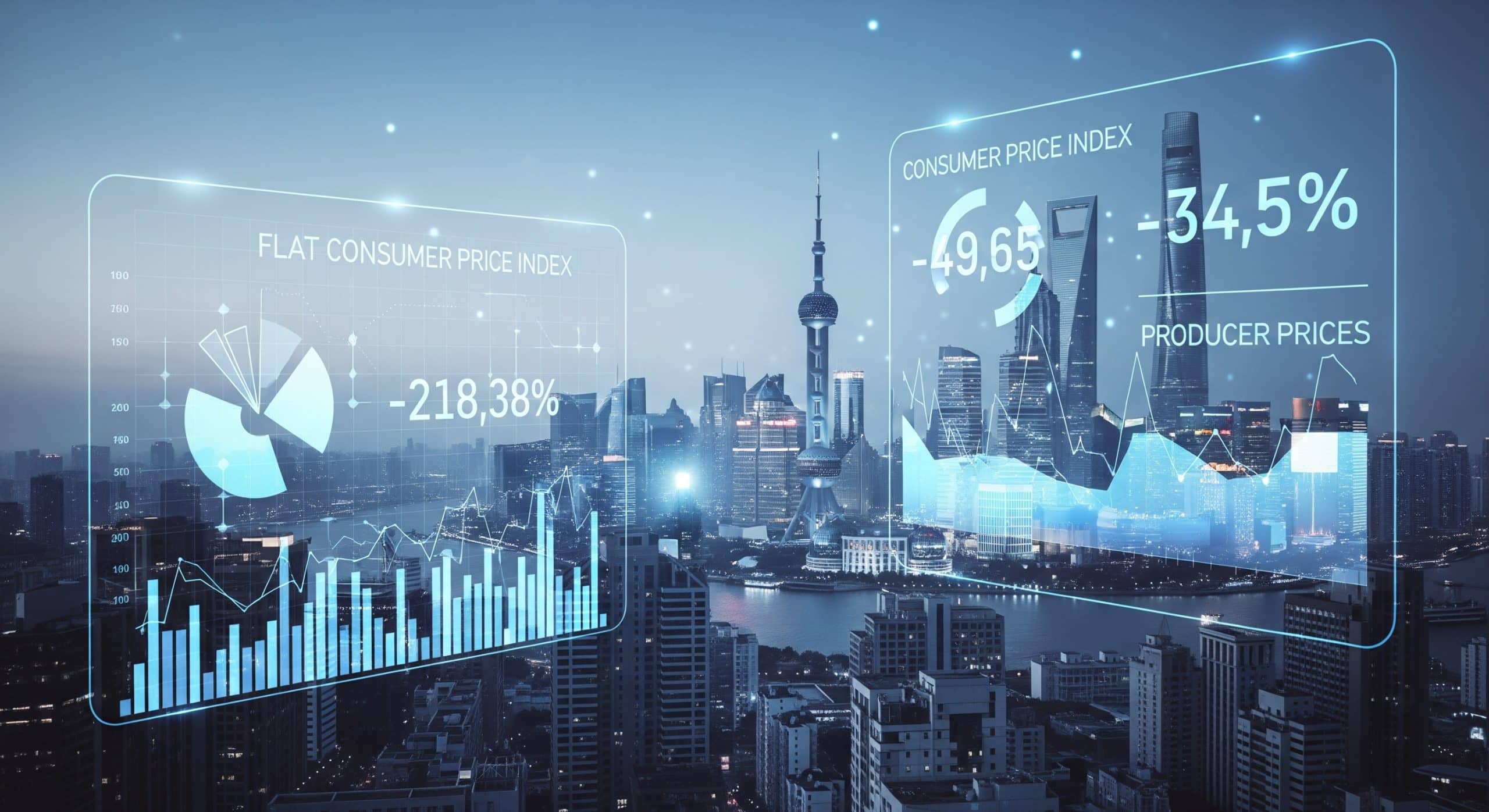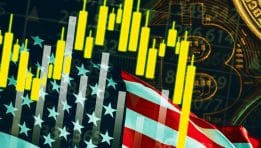China’s Inflation in Mid-2025: Deflationary Pressures, Flat CPI, Fragile Recovery
China’s inflation landscape remains delicate in mid‑2025, showcasing persistent deflationary pressures at the producer level, sluggish consumer-price growth, and a fragile uptick in core inflation. In July 2025, the Consumer Price Index (CPI) remained flat year-over-year, failing to match even moderate economist expectations. While this may ease concerns about overheating, the broader economic context — marked by soft domestic demand, trade uncertainty, and overcapacity — underscores the challenges Beijing faces in steering the economy back toward sustainable growth and low, stable inflation.
Quantitative Snapshot: CPI and PPI Trends
July 2025 CPI: 0.0% YoY, matching June’s muted 0.1% rise, yet beating forecasts of a 0.1% decline — yet again, consumer inflation remains virtually non-existent.
July 2025 Month-on-Month: CPI rose 0.4%, rebounding from June’s 0.1% dip and exceeding expectations of 0.3% .
Core Inflation (YoY): Rose modestly to 0.8%, its highest in approximately 17 months.
June 2025 CPI: Slightly positive at 0.1% YoY, ending a four-month streak of deflation.
Producer Price Index (PPI): Declined 3.6% YoY in both June and July, marking a two-year low in factory-gate prices.
Comparative Trends & Historical Context
Monthly CPI data points to recent improvements: July’s 0.4% rise reverses the slight declines seen in previous months.
Historical averages show a weak core inflation trend, with core CPI previously averaging 100.7 points in June before rising to 100.8 in July.
Factors Influencing Current Inflation Dynamics
1. Weak Domestic Consumption
Ongoing contraction in consumer spending has kept CPI subdued. Retailers and e-commerce giants like Alibaba and JD.com have relied on subsidies and discounts to stimulate sales amid slowing demand .
2. Deflation at the Factory Gate
Persistent PPI contraction reflects structural weaknesses in industrial demand, a result of global trade tensions and capacity gluts .
3. Policy Efforts to Curb Price Wars
Beijing has rolled out “anti-involution” measures targeting industries like autos to reduce destructive price competition, though the impact on headline inflation remains limited for now.
4. Weather-Related Disruptions
Extreme weather events, including overheating and heavy monsoon rains, have disrupted supply chains and pressured certain commodity prices, complicating inflation trends .
5. Trade Uncertainty
Unresolved U.S.-China trade tensions continue to weigh on both export volumes and producer sentiment, reinforcing deflationary environments in export-driven sectors .
Strategic Implications and Policy Prospects
Monetary Easing Expected: With headline inflation in check and durable deflation at the producer level, expectations are mounting for further interest rate cuts in Q4 to support growth .
Supply-Side Reforms Less Aggressive: Policymakers seem to be shying away from sweeping supply-driven reforms seen a decade ago, limiting near-term impact on inflation .
Targeted Sectoral Intervention: While reforms address key sectors, broader stimulus remains constrained by concerns over debt and fiscal sustainability. Weakness in the property sector and consumer sentiment limits effectiveness .
Comparative Analysis & Outlook
China’s inflation path contrasts sharply with other major economies, many of which continue to grapple with post-pandemic inflationary spikes. Here, inflation is either flat or negative. This deflationary pressure complicates global monetary policy narratives and underscores China’s unique balance-of-risk environment.
Economists caution that without renewed consumer demand or robust fiscal stimulus, deflation could linger into 2026 — potentially undercutting growth and weakening global confidence in the world’s second-largest economy .
Conclusion: Navigating Inflation’s Stagnant Waters
China’s mid-2025 inflation metrics tell the story of stagnation rather than panic. Headline CPI remains flat, core inflation inches higher, and producer prices continue to sink, all framed by weak consumption, trade volatility, and structural challenges. While inflation is not spiraling, the risk of sustained disinflation or deflation remains high.
Policy tools are limited — sweeping stimulus or monetary easing could help, yet fiscal constraints and structural imbalances constrain the range of viable responses. A breakthrough in consumer sentiment, perhaps via property stabilization or employment improvements, is critical to reactivating inflationary momentum.
Comparison, examination, and analysis between investment houses
Leave your details, and an expert from our team will get back to you as soon as possible
* This article, in whole or in part, does not contain any promise of investment returns, nor does it constitute professional advice to make investments in any particular field.
To read more about the full disclaimer, click here- Articles
- •
- 9 Min Read
- •
- ago 19 minutes
 HEDGE FUNDS FLIP ON GREEN ENERGY AND START BETTING AGAINST OIL
HEDGE FUNDS FLIP ON GREEN ENERGY AND START BETTING AGAINST OIL
The Shift of Hedge Funds Towards Green Energy Investments In recent years, investment strategies—particularly among hedge funds—have undergone a significant
- ago 19 minutes
- •
- 9 Min Read
The Shift of Hedge Funds Towards Green Energy Investments In recent years, investment strategies—particularly among hedge funds—have undergone a significant
- Articles
- •
- 5 Min Read
- •
- ago 1 hour
 Top-Performing S&P 500 Stocks of 2025: Strategic Lessons for Investors
Top-Performing S&P 500 Stocks of 2025: Strategic Lessons for Investors
The year 2025 has proven to be one of the most diverse in terms of growth drivers for the U.S.
- ago 1 hour
- •
- 5 Min Read
The year 2025 has proven to be one of the most diverse in terms of growth drivers for the U.S.
- Articles
- •
- 8 Min Read
- •
- ago 2 hours
 S&P 500 Price-to-Sales Ratio Hits 3.15: Are We in an Unjustifiably Expensive Market?
S&P 500 Price-to-Sales Ratio Hits 3.15: Are We in an Unjustifiably Expensive Market?
The latest data on the S&P 500’s Price-to-Sales (P/S) ratio shows a striking figure: 3.15 for Q2 2025 (estimated), marking
- ago 2 hours
- •
- 8 Min Read
The latest data on the S&P 500’s Price-to-Sales (P/S) ratio shows a striking figure: 3.15 for Q2 2025 (estimated), marking
- Articles
- •
- 8 Min Read
- •
- ago 3 hours
 A High-Stakes Week for Markets: Inflation Data, Key Earnings, and Macro Signals
A High-Stakes Week for Markets: Inflation Data, Key Earnings, and Macro Signals
A High-Stakes Week for Markets: Inflation Data, Key Earnings, and Macro Signals Investors are heading into one of the most
- ago 3 hours
- •
- 8 Min Read
A High-Stakes Week for Markets: Inflation Data, Key Earnings, and Macro Signals Investors are heading into one of the most












